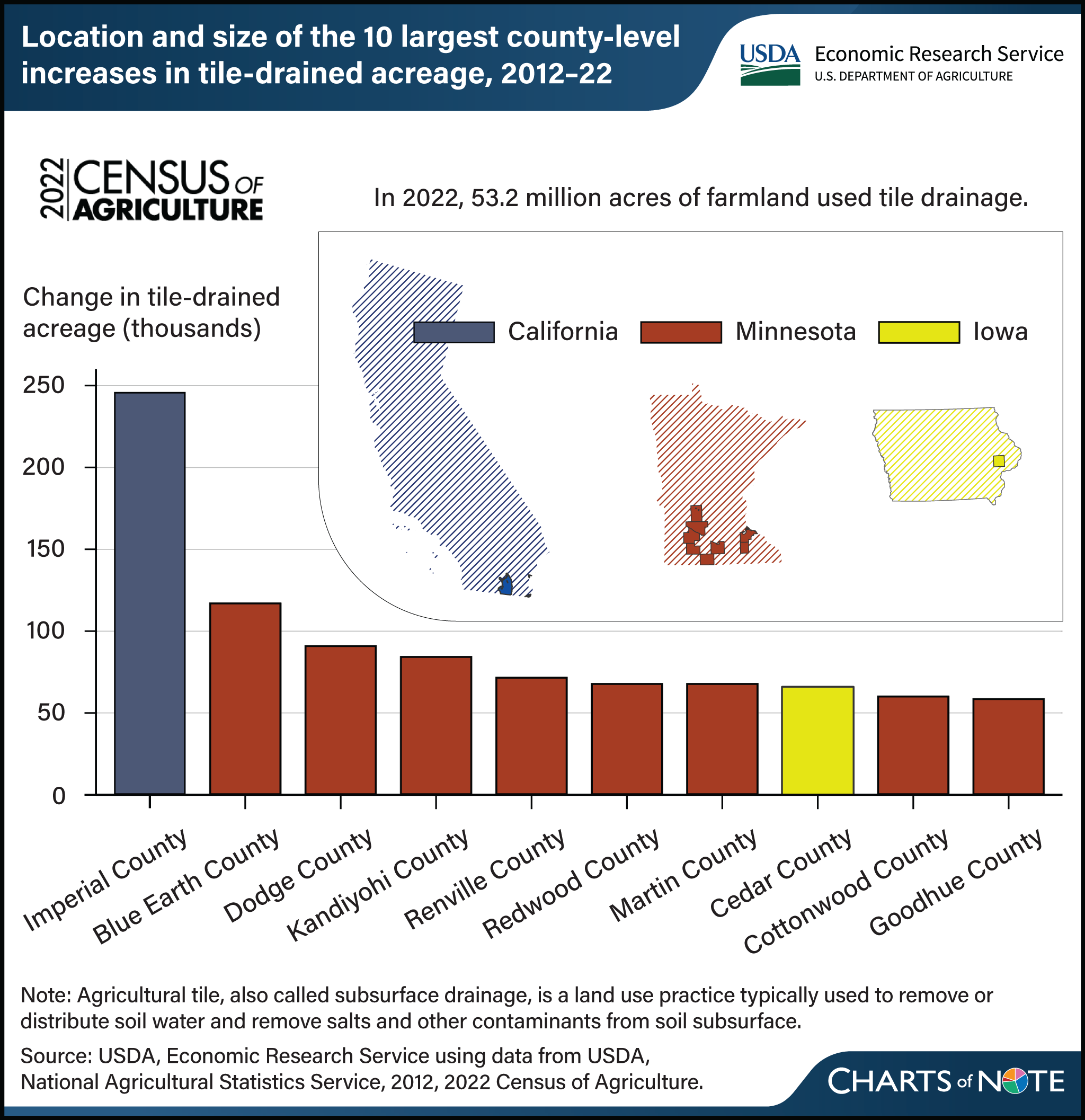2022 Census of Agriculture: Largest increases in tile-drained acreage occurred in California’s Imperial County and southern Minnesota
- by Daniel Szmurlo and Benjamin M. Gramig
- 7/29/2024

Respondents to the 2022 Census of Agriculture reported their land use and conservation practices, including their farmland acres that were drained by tile. Agricultural tile drainage, also called subsurface drainage, is a land use practice typically used to remove or distribute soil water and remove salts and other contaminants from soil subsurface. In 2022, 53.2 million acres of farmland used tile drainage. Imperial County, CA, had the largest county-level increase in tile-drained acreage from 2012 to 2022, with acreage increasing by 246,000 acres, constituting an 88-percent increase. There, tile drainage is used to manage soil salinity levels, since naturally occurring salts in irrigation water from the Colorado River can accumulate in soils and, unabated, threaten the long-term productivity of fields. The 2022 Census of Agriculture also shows that total cropland acreage in Imperial County increased along with the tile-drained acreage increase. Outside of Imperial County, 8 of the top 10 counties for growth in tile-drained acreage were in southern Minnesota and 1 was in Iowa. Tile drainage in the Midwest and Eastern United States, where most tile-drained acreage is located, is used to remove excess water from fields. For agricultural fields in Illinois, Indiana, Iowa, Ohio, Michigan, Wisconsin, and Minnesota, tile drainage helps to ensure timely planting and allows for longer-season corn cultivars on fields that might otherwise be too wet to conduct field work in early spring. For more Census of Agriculture data, see the USDA, National Agricultural Statistics Service’s Census of Agriculture page.
We’d welcome your feedback!
Would you be willing to answer a few quick questions about your experience?

